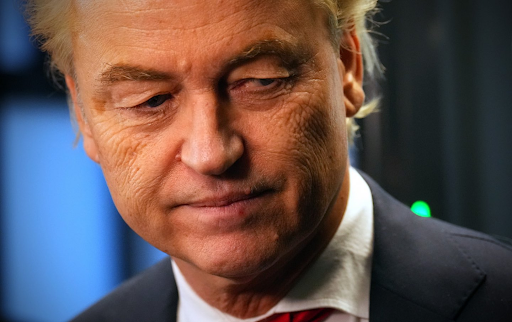On December 3, 2023, Europe’s right-wing leaders held a rally for the Identity and Democracy (ID) group in Florence. These leaders vowed to change the political dynamic in Brussels following the victory of Geert Wilders’ party in the Netherlands’ November general elections. Wilders’ Party for Freedom, or PVV (Partij voor de Vrijheid), won 37 of the 150 seats in the Second Chamber, an increase from its original 17 seats. At the same time, the radical left lost nearly half of its elected representatives.
Matteo Salvini, leader of Italy’s right-wing Lega Party, and his allies aim to make ID the third-largest group in the European Parliament after the European People’s Party (EPP) and the Socialists & Democrats. “Another Europe without socialists in charge is possible and is needed,” Salvini declares as he claims to witness “a blue wave,” representing the ID’s color.
The PVV campaigned on the promise of rejecting all new asylum claims, banning Islamic headscarves from public buildings, deporting dual-national criminals, and ending the free movement of EU workers. This rise in anti-immigration sentiment has occurred during a time when the European Union has been experiencing an energy and climate crisis exacerbated by the war in Ukraine. Within the Netherlands specifically, the country has been experiencing a housing crisis, with about 390,000 more house seekers than available homes and 86% of Dutch people believing there is indeed a housing crisis.
Ahmed Marcouch, the Moroccan-born mayor of Arnhem, a city in the Gelderland province where more than 20% of voters supported the PVV’s promises, has encountered Geert Wilders himself. Wilders protested Marcouch’s election to Arnhem’s mayoral office, claiming that Marcouch was “more suitable to be the mayor of Rabat” than of Arnhem. This anti-Islam stance has shown its effects, with his son having concerns about being forced to leave the country after learning about the elections at school. According to Marcouch, “‘We need that kind of investment to earn back the trust of voters and make people see that democracy will also work for them. Because our democracy isn’t working for everyone.’”
A couple of hours after the PVV won the most seats in the Netherlands’ general election, Wilders brought up a possible “referendum about the Nexit” should he be able to be the next prime minister. However, actions including exiting the European Union and fully banning the Quran in the country would likely not happen because Wilders needs to negotiate some of his promises if he desires more votes to become the Dutch prime minister.
Far-Right Trends in Other European Countries
From Hungary to Greece to Poland, many European countries have been experiencing an increase in the popularity of far-right politicians and political parties. This is only a sample of recent far-right developments within European politics:
In Italy, Giorgia Meloni became the first far-right postwar prime minister in Western Europe after the Brothers of Italy won nearly 26% of the vote in Italy’s September 2022 elections.
In Spain, the nationalist Catholic-conservative party Vox, led by Santiago Abascal, is now the third-largest party in Spain’s national assembly.
In France, Marine Le Pen scored a record 41.46% in France’s 2022 presidential election, with her National Rally Party winning 89 of the 577 seats in the French parliament.
In Germany, the Alternative für Deutschland (Afd) in eastern Germany is expected to grow in popularity after elections in the German states of Thuringia, Brandenburg, and Saxony.
In Austria, the Freedom Party (FPÖ), originally led by a former Nazi official, is one of Europe’s oldest far-right movements and has remained at 28%.
In Finland, the new four-party coalition government is the most rightwing in history. The coalition demands include cutting refugee quotas, making work-based immigration and obtaining Finnish citizenship more difficult, and setting different benefit systems for immigrants and permanent residents.
In Sweden, the Sweden Democrats won 20.5% of the vote in September 2022, the first time the party has been allowed to provide input in a government program. Like many other far-right parties, the Sweden Democrats have also provided proposals to reduce the number of immigrants and people seeking asylum.
Europe is seeing a rise in far-right ideology and elected governments. It’s not just the Netherlands; its general elections show an increasing trend amongst many European governments. The PVV’s surge in popularity and influence in the Dutch government indicates a general movement towards the far-right as more far-right politicians gain support from promises such as cutting immigration.






Be the first to comment on "A European Shift to the Far-Right"